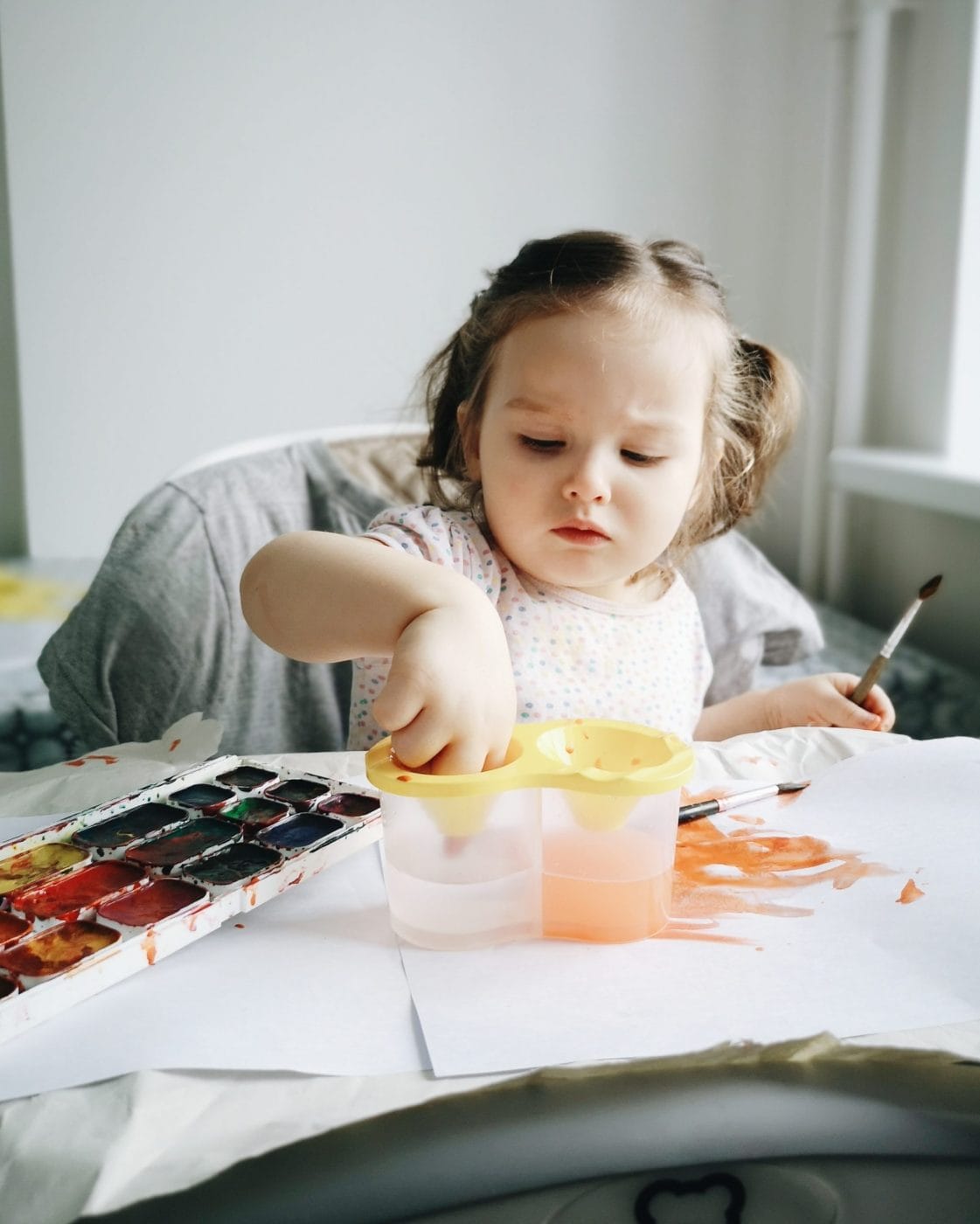10 Montessori-inspired ways to promote your child’s fine motor skills through art

Try these activities before summer ends, mama.
Table of Contents
Art projects offer one of the best ways for young children to develop their hands and learn the pincer grip they will later need to successfully write. But Montessori art work is a little different than what you will find on Pinterest. It’s child-led, meaning that you provide the materials they need and take a step back to let them explore and create.
When using the
Montessori method for refining motor skills, the trick is to find activities that your child will go back to again and again on their own, without having to ask them to practice.
Will the results be recognizable or cute? Not necessarily, but your child will be engaged in the process and with each brush stroke or squiggly line, they will be preparing their hand for writing and other refined hand movements.
Here are 10 Montessori-style art ideas to help promote fine motor skills:
1. Stickers
Peeling stickers off of a sheet is challenging work for a young toddler, but they are highly motivated by the sticker, and so will persevere through the difficulty. For very young toddlers, cut the sheet of stickers so that your child has only 4-5 at a time. This will keep it from being overwhelming. You can also peel off the white backing from the sticker sheet ahead of time to make it easier.
2. Tearing paper
Tearing strips of paper into tiny pieces is something even the youngest toddler can enjoy. In addition to being fun, tearing paper helps strengthen the small hand muscles and develop coordination between the hands.
First, choose beautiful paper and cut it into strips—wrapping paper or some of your child’s paintings are great choices. Next, place a few strips of paper and a little bowl on a tray and show your child how to tear the paper and place the pieces in the bowl. As your child gains hand strength and impulse control, you can introduce scissors for a similar activity.
3. Clay
Clay is a great alternative to Play-Doh because it requires more hand strength to mold. You can switch out the tools you offer to help your child work with their hands in different ways. Working with clay can also be very calming and therapeutic for many children.
4. Crayon rocks
Most children are eager to draw and practice writing before they perfect the three-finger pincer grip needed to correctly hold a pencil. An incorrect pencil grip is very hard to re-teach, so Montessori classrooms prevent children from using pencils until their hand is ready.
Crayon rocks provide the perfect medium for this stage. Their shape encourages children to hold them with a three-finger grip, without any interference from you. You can also just break regular crayons into small pieces, or use those inevitable broken pieces from an older sibling’s reject pile. While young children will often use a whole hand grip with a long crayon, they will need to use their pincer grip for small pieces.
5. Chalk
Chalk requires more pressure than crayons, which helps your child get a sense of the pressure required for writing. Offer chalk on an easel, a small chalkboard at a table, or sidewalk chalk to give them experience with drawing at different angles and on different surfaces.
6. Bead stringing
Bead stringing is an excellent fine motor activity because most children are really drawn to beautiful beads and the challenge level can easily be adjusted by the type of bead you choose. Start with larger beads and pipe cleaners for younger toddlers. Help them twist the pipe cleaner into a bracelet or bookmark.
yarn needle (not sharp!) and show them how to make necklaces.
7. Painting
Painting is another activity that’s wonderful for developing fine motor skills at all different levels. The youngest children can finger-paint, which is great for developing hand strength and experimenting with applying different levels of pressure, while older toddlers can paint with cotton balls if they are still working on their pincer grip.
Once your child can hold a paintbrush with the three-finger grip, painting with a paintbrush is an excellent way to practice control and precision. To set up painting Montessori-style, provide a tray with a water cup, paintbrush, paints and a sponge for cleaning spills. Make everything accessible to your child and show them how to set up and clean up the activity as well.
8. Gluing
Showing your child how to use glue can be daunting because of the potential for mess, but it can be an excellent fine motor exercise. Offer your child small things to glue, such as sequins or tiny scraps of paper to maximize the fine motor challenge and encourage precision.
9. Pin poking
Pin poking, or perforating, is a classic Montessori exercise for 3-6-year-olds.
For this exercise, a child may carefully poke holes around the edge of a traced circle. If the child does it carefully and makes the holes close together, they can then punch out the shape. This requires a great deal of concentration and control. As with anything sharp, you will want to make sure your child is ready to be safe with the work and to always supervise this activity.
10. Tracing
Once your child has mastered the pincer grip and is starting to write with a pencil, tracing can be a great way for them to improve their hand control. Children in Montessori classrooms trace
metal insets, a special set of metal shapes, but you could certainly use simple stencils at home.
Once they’ve mastered how to trace a shape, show them how to decorate the shapes with designs and patterns.
Art is something most children are naturally drawn to on their own. By thinking through which art materials you offer your child, you can use their creative experience to help them develop their fine motor skills as well, no prodding required.


































